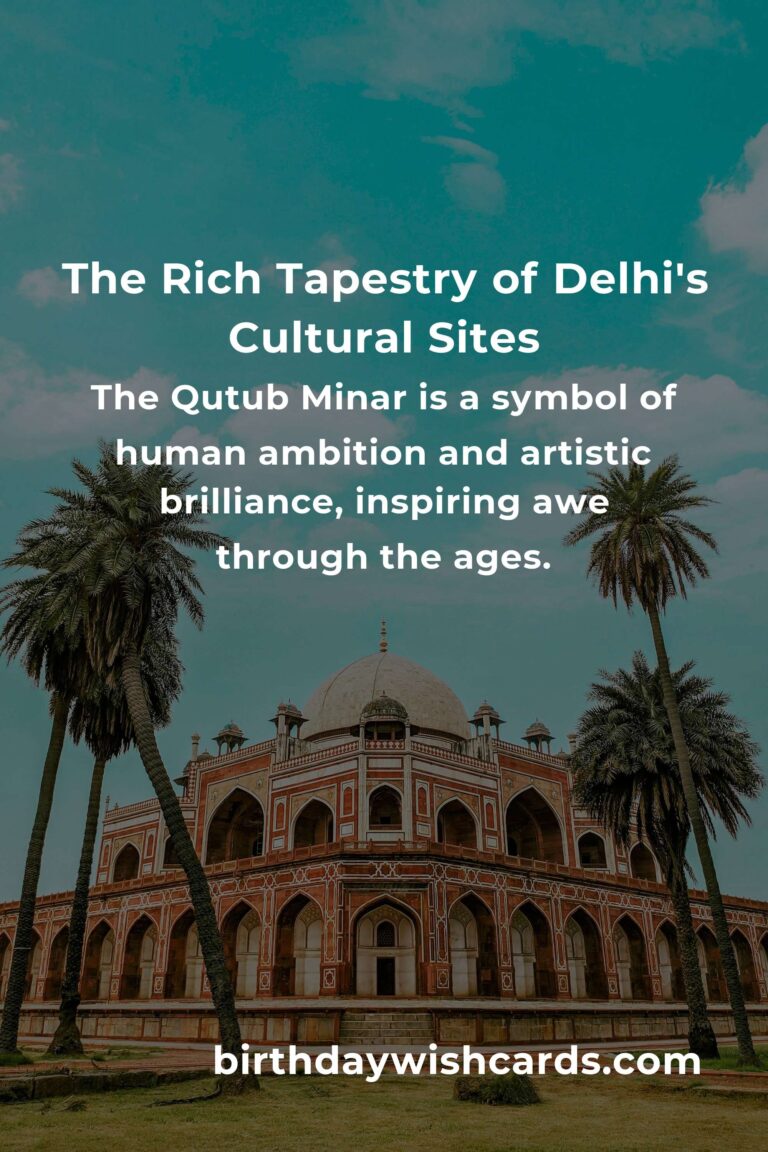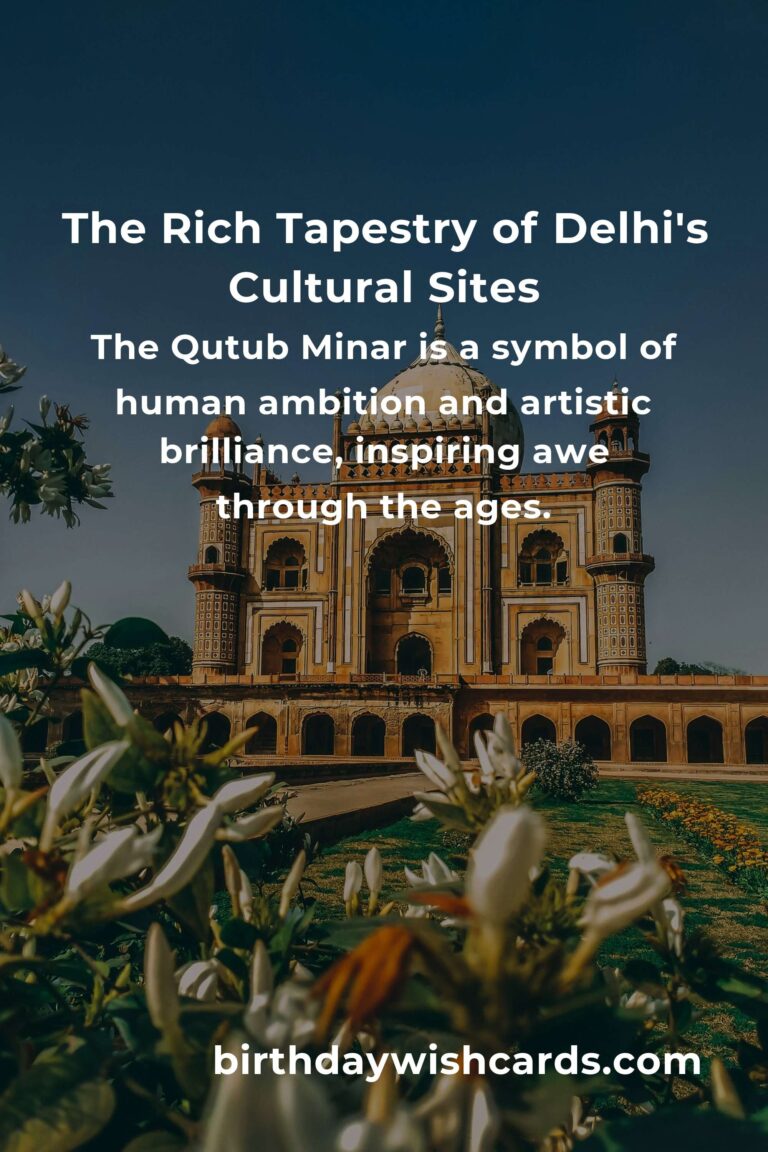
Delhi, a city that wears its heart on its sleeve, is a mesmerizing blend of the past and present. This city, with its bustling streets and serene corners, offers a cultural tapestry that is as rich as it is diverse. From the echoes of Mughal architecture to the whispers of colonial history, Delhi’s cultural sites tell stories that are waiting to be heard. Let’s embark on a journey that delves deep into the soul of Delhi, exploring its cultural sites with both heart and mind.
The Majestic Red Fort: A Symbol of Resilience
Standing proudly in the heart of Old Delhi, the Red Fort is more than just a UNESCO World Heritage Site; it is a symbol of India’s resilience and strength. Built by the Mughal Emperor Shah Jahan in the 17th century, this magnificent fort has witnessed the rise and fall of empires. As you walk through its grand gates, the red sandstone walls whisper tales of battles and celebrations that have shaped India’s history.
Imagine the stories of soldiers who once guarded these walls, the echoes of royal celebrations, and the solemn speeches that ignited a nation’s independence. Visiting the Red Fort is not just about admiring its architecture; it’s about connecting with the spirit of a nation that has overcome immense challenges.
Humayun’s Tomb: A Glimpse into the Past
Humayun’s Tomb, another masterpiece of Mughal architecture, is a serene oasis amidst the chaos of the city. This stunning garden tomb, built in the mid-16th century, is the precursor to the Taj Mahal and offers a glimpse into the grandeur of the Mughal era. As you wander through the lush gardens, you can almost hear the rustle of robes and the whispers of the past.
The beauty of Humayun’s Tomb lies not just in its architecture but in the stories of love and legacy it represents. It was commissioned by Humayun’s widow, Empress Bega Begum, as a tribute to her beloved husband. This site serves as a poignant reminder of the enduring power of love, even in the face of mortality.
Qutub Minar: Reaching for the Skies
The Qutub Minar stands tall and proud, reaching for the skies and capturing the imagination of all who lay eyes upon it. This towering minaret, a UNESCO World Heritage Site, was commissioned by Qutb-ud-din Aibak in the 12th century and completed by his successors. Its intricate carvings and towering presence are a testament to the artistic brilliance of that era.
Walking around the Qutub complex, you can sense the awe that this structure has inspired for centuries. It’s more than just a minaret; it’s a symbol of human ambition and the quest for greatness. As you stand in its shadow, you can’t help but feel a connection to the craftsmen and visionaries who brought this marvel to life.
Lotus Temple: Embracing Unity and Peace
In stark contrast to the ancient wonders of Delhi, the Lotus Temple is a modern architectural marvel that embodies the spirit of unity and peace. Designed in the shape of a lotus flower, this Bahá’í House of Worship welcomes people of all faiths to meditate and reflect within its tranquil walls.
Stepping into the Lotus Temple, you leave behind the noise of the city and enter a space of calm and introspection. It’s a place where differences dissolve and humanity unites in a shared quest for peace and understanding.
India Gate: A Tribute to Sacrifice
India Gate, an iconic war memorial, stands as a solemn tribute to the soldiers who laid down their lives for the nation. This grand archway, reminiscent of the Arc de Triomphe, is surrounded by lush lawns where families gather to pay their respects and enjoy leisurely picnics.
As you walk around India Gate, take a moment to read the names etched into its stone. Each name is a reminder of the sacrifices made and the price of freedom. It’s a place where history and humanity intersect, urging us to remember and honor the past.
The Heartbeat of Delhi: Chandni Chowk
No visit to Delhi is complete without experiencing the vibrant chaos of Chandni Chowk. This bustling market, with its narrow lanes and vibrant stalls, is a sensory overload that captures the essence of Delhi’s spirit. From the aroma of street food to the vibrant colors of textiles, Chandni Chowk is a celebration of life in its rawest form.
As you navigate its crowded streets, remember that Chandni Chowk is more than just a market; it’s the heartbeat of Delhi. It’s where the past and present collide, creating a tapestry of experiences that make Delhi so unique.
Delhi’s cultural sites are more than just places to visit; they are experiences to be lived. They offer us a chance to connect with history, to understand the stories that have shaped us, and to find inspiration in the resilience of the human spirit. So, the next time you find yourself in Delhi, take a moment to listen to the stories these sites have to tell. They might just change the way you see the world.
Delhi is a city that effortlessly marries the past with the present, offering a rich tapestry of cultural experiences.
The Red Fort stands as a testament to India’s resilience, whispering tales of battles and celebrations.
Humayun’s Tomb is a serene oasis that tells stories of love and legacy, reminding us of the enduring power of love.
The Qutub Minar is a symbol of human ambition and artistic brilliance, inspiring awe through the ages.
The Lotus Temple embodies unity and peace, inviting people of all faiths to reflect and find common ground.
India Gate is a solemn tribute to the sacrifices of soldiers, urging us to honor and remember the past.
Chandni Chowk captures the essence of Delhi’s vibrant spirit, offering a sensory overload of experiences.
#ExploreDelhi #CulturalTapestry #HeritageSites #HeartOfDelhi #LegacyOfLove #UnityAndPeace #VibrantSpirit

